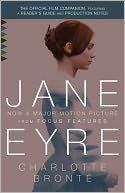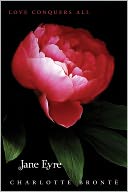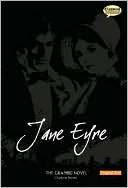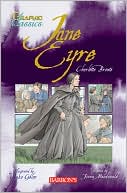 Few literary cries have echoed down the ages as persistently as that one: the ultimate impassioned plea from the ultimate gothic romance, which stands as sturdily today as when it was first published in 1849. From Jane Eyre to Twilight is an unbroken line of gloomy castles, windswept moors, and tortured gentlemen with thorny dispositions and dark secrets. Also heroines whose courage and resolve will be tested–though none, to my mind, measure up to the original Jane.
Few literary cries have echoed down the ages as persistently as that one: the ultimate impassioned plea from the ultimate gothic romance, which stands as sturdily today as when it was first published in 1849. From Jane Eyre to Twilight is an unbroken line of gloomy castles, windswept moors, and tortured gentlemen with thorny dispositions and dark secrets. Also heroines whose courage and resolve will be tested–though none, to my mind, measure up to the original Jane.
The latest film adaptation was released earlier this month in a limited run. If it doesn’t appear on a screen near you, the DVD will no doubt be available soon (while waiting, check out a few dozen other adaptations). It sounds like it might be worth a look, though I don’t know what the PG-13 rating is for. The director claims that he ramped up “the gothic elements,” so the fear factor may be more intense. (UPDATE: Just saw the WORLD magazine review, which cites “a nude image and brief violence.”)
One interesting twist is that the movie opens on a scene that takes place near the end of the book: Jane fleeing Thornfield Hall after learning Mr. Rochester’s terrible secret. She finds refuge in the house of St. John Rivers, a country pastor, and his two learned sisters. Their home becomes a sanctuary for Jane to reassess her life through a series of flashbacks: her terrible childhood, her dreary introduction to Lowood boarding school, and her acceptance of a governess’s position at Thornfield, whose moody master she eventually falls for.
I’m always interested in how film versions portray St. John, a prospective missionary whose commitment borders on fanaticism. Many don’t include him at all, and others give him only a walk-on part. This version gives him more screen time, but apparently not to advantage: one review describes his character as “sanctimonious,” another as “unctuous”–almost as if those were the only terms a film reviewer can apply to a Christian minister of the 19th century. They certainly fit the Rev. Mr. Brocklehurst of Lowood School, but St. John is of different stock: called, sanctified, devoted to the point of callousness at times. He attempts to make Jane over in his image, and of course fails. But her relationship with him is vital to the finishing of her character.
And what of that character? She starts life as an orphan, “a little roving, solitary thing” with a passionate nature that could easily be twisted to bitterness. That it isn’t owes much to two early influences: Miss Temple and Helen Burns, respectively a teacher and a fellow student at Lowood School. Miss Temple is the kind earth-angel that motherless little girls naturally fall in love with. Helen is a mystic whose contemplative manner and other-worldly patience intrigue and inspire Jane–the sort of too-good-for-this-world character no Victorian novel could be without, and her early death is almost de rigueur. Such a nun-like calling is not for Jane, yet Helen’s influence is profound, a primary source of the quiet strength with which the young governess goes on to encounter Mr. Rochester.
The central story is bracketed between these two angular pillars: Helen Burns and St. John Rivers. From Helen’s meekness Jane acquires her steel; from St. John’s rigor she learns grace. The first enables her to stand her ground against Mr. Rochester’s verbal bullying (and eventually win his heart); the second spurs her to return to him when the obstacle to their marriage is removed. Both Helen and St. John are motivated, shaped, and inspired by Christian faith, though they manifest that faith in ways that fit their personalities–as does Jane. A feature article in the New York Times quotes the mystified actress who plays the title role: “What I loved about Jane is that she has this innate sense of self-respect and there’s really nowhere it should have come from . . . Everything she has achieved, it’s because she made it for herself.”
 That’s one way to completely misread the book. But I recommend you just read it. There are a couple of new versions in time for the movie release: Vintage Classics offers a media tie-in, including production notes, commentary from cast and crew, and two sets of discussion questions, one dealing with the novel itself and the other comparing the novel and the film version. Another recent edition is from HarperTeen, formatted with wide margins and a little extra space between the lines. Appendices include Fascinating Facts about the author, a recipe for those who aspire to write their own gothic romance, and a “What would you do in the name of love” quiz.
That’s one way to completely misread the book. But I recommend you just read it. There are a couple of new versions in time for the movie release: Vintage Classics offers a media tie-in, including production notes, commentary from cast and crew, and two sets of discussion questions, one dealing with the novel itself and the other comparing the novel and the film version. Another recent edition is from HarperTeen, formatted with wide margins and a little extra space between the lines. Appendices include Fascinating Facts about the author, a recipe for those who aspire to write their own gothic romance, and a “What would you do in the name of love” quiz.
 My son, an avid reader growing up (still is, time permitting) could never get into Jane Eyre, but he might have appreciated the Classical Comics edition of Jane Eyre: the Graphic Novel (2008), adapted by Amy Corzine and illustrated by John M. Burns.
My son, an avid reader growing up (still is, time permitting) could never get into Jane Eyre, but he might have appreciated the Classical Comics edition of Jane Eyre: the Graphic Novel (2008), adapted by Amy Corzine and illustrated by John M. Burns.  Younger or more reluctant readers for whom the language might be an obstacle might still enjoy the “Graphic Classics” version (2009), retold by Fiona Macdonald and illustrated by Penko Gelev. Much of the original language is used in the (abridged) dialogue, but less-accessible words are defined in footnotes, and background material is included.
Younger or more reluctant readers for whom the language might be an obstacle might still enjoy the “Graphic Classics” version (2009), retold by Fiona Macdonald and illustrated by Penko Gelev. Much of the original language is used in the (abridged) dialogue, but less-accessible words are defined in footnotes, and background material is included.
READING JANE: Or just grab a copy off the library shelf. I don’t recommend using a reader’s guide, as most teenage girls (and a lot of boys) can enjoy the narrative without professional help. Here are a few points to think about, though:
- How many biblical references can you find–either direct quotes or allusions to scripture? If you have a friend or group who’s reading the book at the same time, make separate lists and compare them. Hint: there’s a lot!
- Describe Jane at three times in her life: 1) just before she leaves Mrs. Reed’s house for Lowood, 2) her arrival at Thornfield Hall, and 3) her return to Thornfield after staying with the Riverses for almost a year.
- If you enjoy writing dialogue, try rewriting one of the conversations between Jane and Mr. Rochester in modern-day language. These conversations, especially before their interrupted wedding, are like sparring matches where each takes the measure of the other. What is each person trying to communicate beyond the words?
Support our writers and help keep Redeemed Reader ad-free by joining the Redeemed Reader Fellowship.
Stay Up to Date!
Get the information you need to make wise choices about books for your children and teens.
Our weekly newsletter includes our latest reviews, related links from around the web, a featured book list, book trivia, and more. We never sell your information. You may unsubscribe at any time.
We'd love to hear from you!
Our comments are now limited to our members (both Silver and Golden Key). Members, you just need to log in with your normal log-in credentials!
Not a member yet? You can join the Silver Key ($2.99/month) for a free 2-week trial. Cancel at any time. Find out more about membership here.
1 Comments
Leave a Comment
You must be logged in to post a comment.


One thing I love to do when introducing this novel to my high-schoolers is to have a “Jane Eyre Beauty Pageant.” Typically the book covers fail to show her as plain as Bronte intended. Those that try, well…. it makes for a fun discussion about beauty and our expectations. (Apparently, every classic novel has now undergone “Twilight-ization” and this exercise may become a thing of the past.)
-Renee